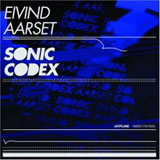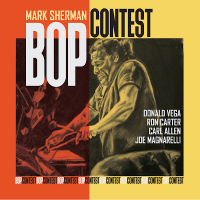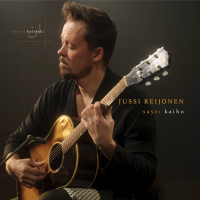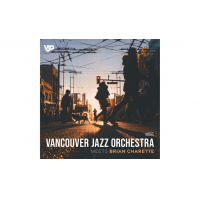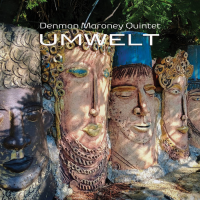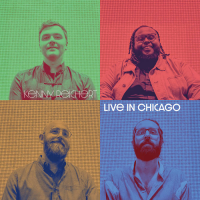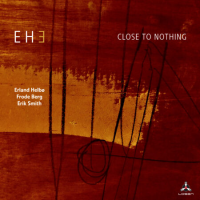Home » Jazz Articles » Extended Analysis » Getatchew Mekurya: Getatchew Mekurya: Negus Of Ethiopian Sax
Getatchew Mekurya: Getatchew Mekurya: Negus Of Ethiopian Sax
 Getatchew Mekurya
Getatchew MekuryaEthiopiques 14: Negus Of Ethiopian Sax
Buda Musique
2003
Buda Musique's mind-expanding Ethiopiques series—23 discs strong and counting—is a treasure trove of strange and wonderful music, none more so than that contained on Negus Of Ethiopian Sax, which is devoted to tenor saxophonist Getatchew Mekurya and his shellela music. Unless you've already had the good fortune to encounter Ethiopiques, it's probably safe to say you won't have heard anything like it ever before. And almost as safe to predict you will be transfixed, transported and hooked.
Primal and shamanic, Mekurya's playing evokes something of saxophonists Ornette Coleman and Albert Ayler, with all their passion and in-the-moment invention (though none of Ayler's extended altissimo screeching), with a shot of honking tenor men Big Jay McNeely and Willis Jackson thrown in for added funk.
But the relationship is an illusory one: Mekurya's style developed in complete isolation from the US free jazz it distantly and tangentially resembles, and is entirely Ethiopian in origin and form. It's based on a specialised genre of traditional vocal music sung by warriors before going into battle—pumped up, epic, threatening and boastful, harsh and hoarse-voiced—with discursive modal improvisation at its core. Unlike its US resonances, it's mostly performed in 3/4 time, from slow and menacing through fast and furious. The instrumental variant developed in Addis Ababa dancehalls in the early to mid 1950s.
Mekurya was amongst the first musicians to play instrumental shellela, and he remains its most revered saxophonist. In 1955, when, aged 20, he joined the house band at Addis' Haile Selassie I Theatre, he was already experimenting with the form. He took its tradition seriously, and would often appear onstage in a warrior's animal-skin tunic and lion's mane head-dress—and he sounds like he looks in the photos.
"Shellela Besaxophone," the final track on Negus Of Ethiopian Sax, is a single recorded in the late 1950s, as lo-fi as it gets but still vibrating out of the speakers. For about three minutes, Mekurya's tenor engages in ferocious, improvised call and response with the Selassie I horn section. Any other instruments, if they were present, are inaudible. It's raw, abandoned, melismatic, and powerfully stirring. Sun Ra's Arkestra might have sounded like this, if each player had taken a tab of Owsley's finest.
The rest of the album was originally released on vinyl LP in 1972. By then, Mekurya had added some nuance to shellela, which in its traditional vocal form is overwhelmingly revved-up and confrontational. Though generally declamatory, the mood softens a little at times, even occasionally approaching the balladic, and electric keyboards, bass guitar and kit drums provide a modern feel.
Typically, Mekurya's saxophone introduces a brief rhythmo-melodic motif, which is taken up by the rest of the band and then explored, embellished and deconstructed over an extended tenor solo which becomes progressively more free and unhinged. Throughout, Mekurya plays with a pronounced, rapid vibrato, which intensifies the incantatory feel of his work. Trumpet and second saxophone are added on some tracks, playing stabbing, Stax-like riffs or engaging in collective improvisation with the leader. The electric keyboards are a riot of otherworldly textures and effects. On one track, "Ambassel," Mekurya switches to full-throated clarinet, so wide open it sounds like Sidney Bechet on soprano saxophone.
Like all the Ethiopiques discs, Negus Of Ethiopian Sax comes with an informative, well researched booklet which includes, invaluably, some hugely evocative photos of Mekurya and his bands in action. The most atmospheric, taken in 1969, shows him and three other horn men contorting themselves with tent show abandon onstage in a Gondar club. The most recent, taken in 2001, shows him tuxedo-clad, playing one of his twice-weekly gigs at Addis' top-end Sheraton Hotel. He looks fit and healthy and is performing, one can only imagine, a very different style than the wild and trippy music heard on this fabulous disc.
Tracks: Yegenet Muziqa; Shellela; Aha Gedawo; Antchi Hoye; Ambassel; Almaz Yeharerwa; Yene Hassab Gwadegna; Shemonmwanaye; Gofere/Antchi Hoye; Aynotche Terabu; Akale Wube; Tezeta; Gedamay; Muziqa Heywete; Shellela Besaxophone.
Personnel: Getatchew Mekurya: tenor saxophone, clarinet; Girma Beyene, Getatchew Degefu: piano and organ; Bogale Welde-Hanna: saxophone and maracas; Mekonnen Mersha: trumpet; Abbebe Haylou, Alemayehu Eshete: bass; Eshetu Hayle: drums.
Track Listing
Yegenet Muziqa; Shellela; Aha Gedawo; Antchi Hoye; Ambassel; Almaz Yeharerwa; Yene Hassab Gwadegna; Shemonmwanaye; Gofere/Antchi Hoye; Aynotche Terabu; Akale Wube; Tezeta; Gedamay; Muziqa Heywete; Shellela Besaxophone.
Personnel
Getatchew Mekurya
saxophone, tenorGetatchew Mekurya: tenor saxophone, clarinet (5); Girma Beyene, Getatchew Degefu: piano and organ; Bogale Welde-Hanna: saxophone and maracas; Mekonnen Mersha: trumpet; Abbebe Haylou, Alemayehu Eshete: bass; Eshetu Hayle: drums.
Album information
Title: Getatchew Mekurya: Negus Of Ethiopian Sax | Year Released: 2007
Tags
About Getatchew Mekurya
Instrument: Saxophone, tenor
PREVIOUS / NEXT
Support All About Jazz
 All About Jazz has been a pillar of jazz since 1995, championing it as an art form and, more importantly, supporting the musicians who make it. Our enduring commitment has made "AAJ" one of the most culturally important websites of its kind, read by hundreds of thousands of fans, musicians and industry figures every month.
All About Jazz has been a pillar of jazz since 1995, championing it as an art form and, more importantly, supporting the musicians who make it. Our enduring commitment has made "AAJ" one of the most culturally important websites of its kind, read by hundreds of thousands of fans, musicians and industry figures every month.



